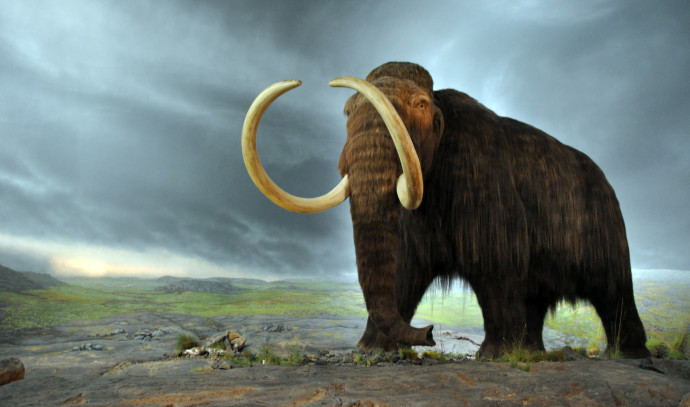|
Getting your Trinity Audio player ready...
|
The biotechnology company, Colossal, intends to revive the Woolley Mammoth as soon as 2027, medium.com reported in January of this year.
The biosciences company lays out a ten-step process for how they will resurrect the Woolley Mammoth.
Step one is to locate well-preserved mammoth samples. This step is simple as mammoths frequently colder regions such that, when they died, ice and frost preserved the carcasses of some individuals in excellent condition.
In fact, some such instances were so well preserved that scientists were able to collect samples of hair, skin, tusks, meat, and even stomach contents.
After step two, sequencing the mammoth genome, step three is to sequence the Asian elephant genome.
Colossal notes the similarity between these animals, the two sharing 99.6% of their genetic makeup,
Step four is to identify the important genes that enable the mammoth to thrive in cold environments.
The fifth step is to replace sequences of elephant DNA in elephant cells with corresponding mammoth DNA sequences.
The sixth step is to edit the relevant genes with the cold-hardy genes identified previously to create an elephant breed adapted for cold climates.
Step seven is to test the cells to ensure that they are exhibiting the engineered traits using stem cell technology.
Step eight is to fuse the nucleus of the engineered cells into a harvested Asian elephant egg.
Penultimately, step nine is to implant the embryo into an Asian elephant surrogate and finally, step ten is to care for and monitor the surrogate mother as the mammoth fetus gestates and is born.
Colossal notes that the revolutionary genome editing tool they are using to resurrect the Woolley Mammoth is called CRISPR, and they intend to use it to close the 0.4% genetic gap between mammoths and Asian elephants.
Will Woolley Mammoths help the planet?
Colossal expects the reintroduction of the Woolley Mammoth to be a boon for the environment as well.
The company predicts the effects of the mammoth to include increasing carbon sequestration through increased plant and forb growth, increased nutrient cycling, and compacting the Earth to facilitate deeper penetration of winter soil freezing.
Furthermore, they believe the altered plant topology will aid in the Albedo effect, reflecting more sunlight back into space. Enhanced plant topology could also aid evapotranspiration, thereby lowering soil moisture and decreasing waterlogging.



